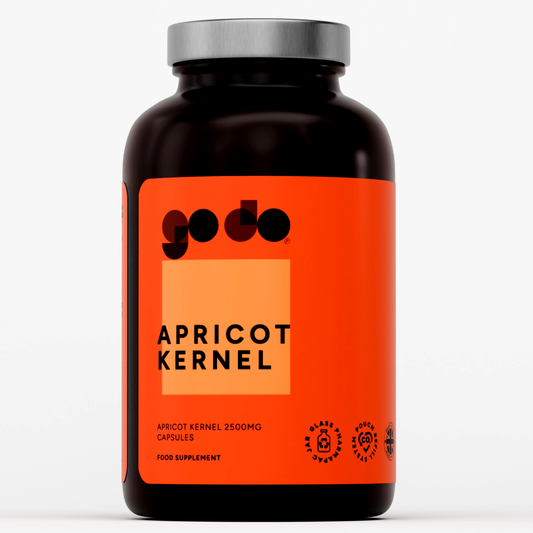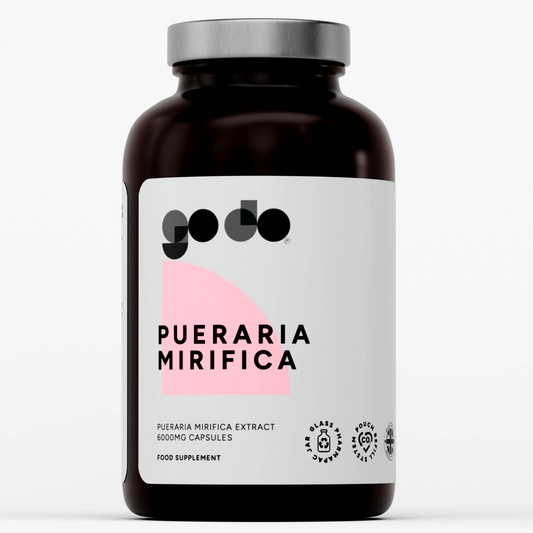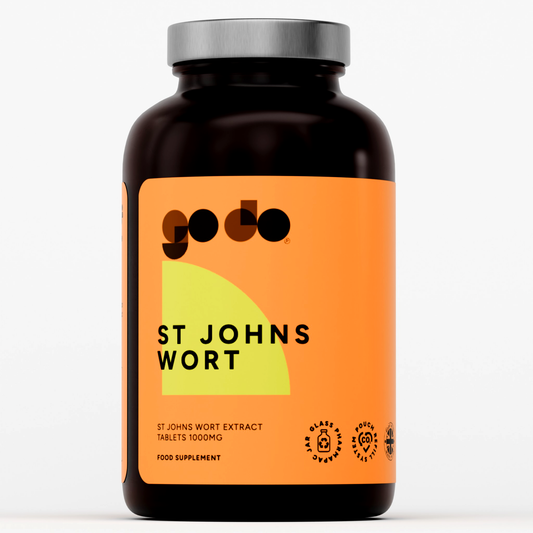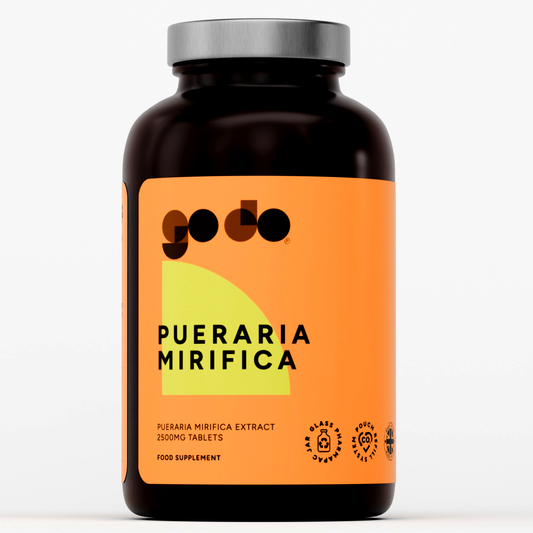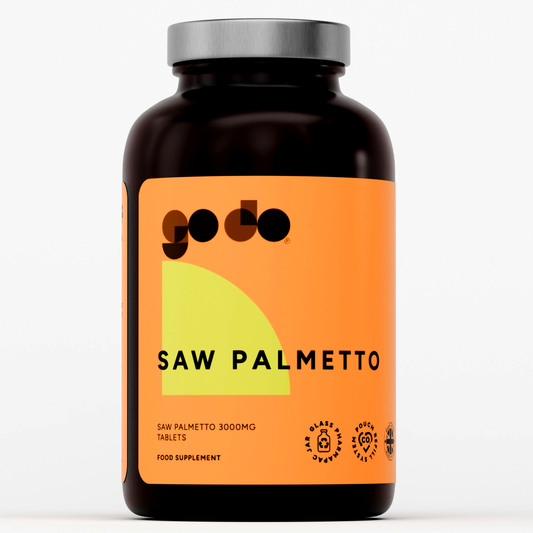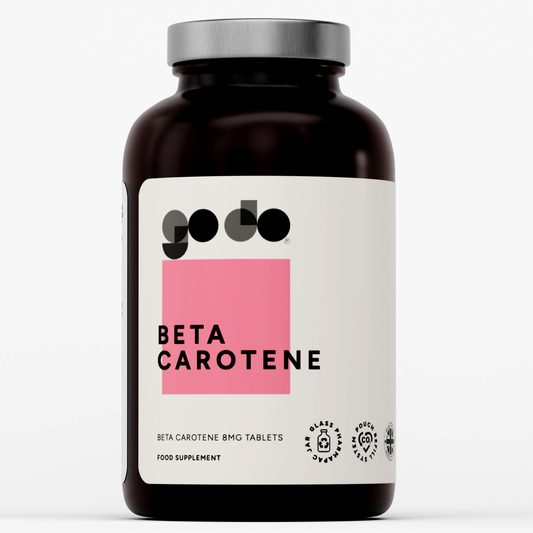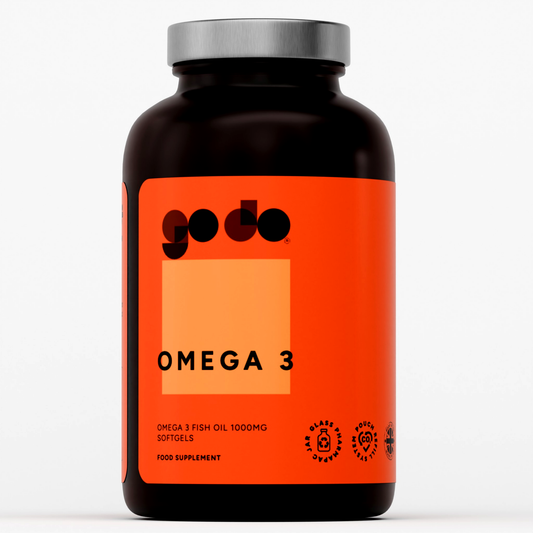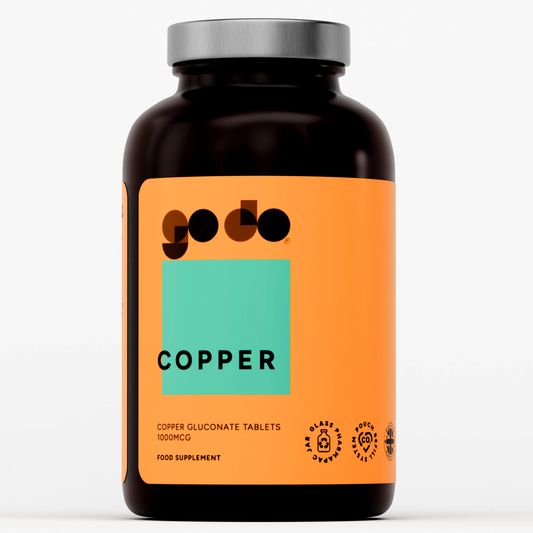Understanding Phytoestrogens: Nature's Hormonal Modulators
Phytoestrogens represent a diverse group of naturally occurring plant compounds that possess the unique ability to interact with estrogen receptors in the human body, offering potential benefits for hormonal balance through their selective estrogen receptor modulator (SERM) activities. These bioactive compounds are found in various plant foods and have been consumed by humans for thousands of years, with their hormonal effects only recently being understood through modern scientific research.
The term "phytoestrogen" literally means "plant estrogen," though these compounds are structurally distinct from human estrogens while sharing enough molecular similarity to bind to estrogen receptors. This binding capacity allows phytoestrogens to exert both estrogenic and anti-estrogenic effects depending on the tissue, the concentration present, and the individual's existing hormone levels, making them sophisticated modulators of hormonal activity.
The three main classes of include isoflavones, lignans, and coumestans, each with distinct chemical structures, food sources, and biological activities. Isoflavones, found primarily in soy products, represent the most extensively studied group, while lignans are abundant in flaxseeds and whole grains, and coumestans are present in legumes and sprouts.
The concept of phytoestrogens as selective estrogen receptor modulators means they can act as weak estrogens when endogenous estrogen levels are low, such as during menopause, while potentially blocking stronger estrogen effects when estrogen levels are high, such as in certain disease states. This adaptive quality makes them potentially valuable for supporting hormonal balance across different life stages and conditions.
Understanding phytoestrogens requires recognizing that their effects are dose-dependent, tissue-specific, and influenced by individual factors including genetics, gut microbiome composition, and overall health status. This complexity explains why research on phytoestrogens sometimes yields seemingly contradictory results and why personalized approaches to their use may be most beneficial.
The Science of Estrogen Receptors and Phytoestrogenic Action
Estrogen Receptor Biology and Function
The human body contains two primary types of estrogen receptors, ERα (alpha) and ERβ (beta), which are distributed differently throughout various tissues and mediate distinct physiological responses to estrogen exposure. These receptors function as transcription factors that, when activated by estrogen or estrogen-like compounds, regulate the expression of hundreds of genes involved in reproduction, metabolism, bone health, cardiovascular function, and brain activity.
ERα receptors are predominantly found in reproductive tissues, liver, and bone, where they mediate many of estrogen's traditional feminizing effects and metabolic functions. ERβ receptors are more widely distributed, found in brain, cardiovascular system, immune tissues, and other organs, where they often exert protective and regulatory effects that may counterbalance some of ERα's actions.
The differential distribution and function of these receptor subtypes help explain how phytoestrogens can have tissue-specific effects. Many phytoestrogens show preferential binding to ERβ receptors, which may contribute to their potential protective effects in cardiovascular and brain health while having minimal impact on reproductive tissues where ERα predominates.
Estrogen receptors can be activated through both genomic and non-genomic pathways, with genomic effects involving direct DNA binding and gene transcription changes, while non-genomic effects involve rapid cellular signaling cascades. Phytoestrogens can influence both pathways, though they typically have weaker genomic effects compared to endogenous estrogens.
The concept of estrogen receptor selectivity explains how the same phytoestrogenic compound can have different effects in different tissues or individuals. Factors such as receptor density, co-regulator proteins, and local hormone concentrations all influence how phytoestrogens interact with estrogen receptors and what biological effects result from these interactions.

Mechanisms of Phytoestrogenic Activity
Phytoestrogens exert their biological effects through multiple mechanisms beyond simple estrogen receptor binding, including antioxidant activity, enzyme inhibition, and modulation of growth factors and signaling pathways. This multi-target approach helps explain their complex and sometimes paradoxical effects on human health and hormone balance.
The binding affinity of phytoestrogens to estrogen receptors is typically 100-1000 times weaker than that of endogenous estradiol, which means they can competitively inhibit stronger estrogen effects when estrogen levels are high while providing mild estrogenic stimulation when estrogen levels are low. This weak binding creates the SERM-like activity that makes phytoestrogens potentially beneficial for hormone balance.
Many phytoestrogens possess significant antioxidant properties that may contribute to their health effects independently of their estrogenic activity. These antioxidant effects can help protect tissues from oxidative damage, reduce inflammation, and support overall cellular health, particularly in tissues sensitive to hormonal fluctuations.
Phytoestrogens can influence the activity of enzymes involved in estrogen metabolism, including aromatase, which converts androgens to estrogens, and sulfatases and glucuronidases, which affect estrogen activation and clearance. These enzymatic effects can alter overall estrogen exposure and metabolism in ways that support hormonal balance.
The gut microbiome plays a crucial role in phytoestrogen metabolism and activation, with certain bacterial species required to convert plant compounds into their active forms. Individual variations in gut bacterial composition help explain why people respond differently to phytoestrogen consumption and why some individuals may benefit more than others from phytoestrogen-rich foods.
Major Classes of Phytoestrogens
Isoflavones: The Soy Connection
Isoflavones represent the most extensively studied class of phytoestrogens, with genistein, daidzein, and glycitein being the primary compounds found in soy products and other legumes. These compounds have generated significant research interest due to observations that populations with high soy consumption, particularly in Asian countries, often have lower rates of hormone-related cancers and menopausal symptoms.
Genistein, the most potent isoflavone, demonstrates strong binding affinity for ERβ receptors and exhibits both estrogenic and anti-estrogenic properties depending on the biological context. In laboratory studies, genistein has shown potential anti-cancer properties, cardiovascular protective effects, and bone health benefits, though human studies have yielded mixed results.
Daidzein requires conversion to equol by specific gut bacteria to exert its most potent biological effects, and only about 30-50% of individuals possess the bacterial strains necessary for this conversion. This metabolic requirement helps explain the significant individual variation in response to soy isoflavone supplementation and suggests that equol-producing status may be an important factor in determining who benefits most from isoflavone consumption.
The processing and preparation of soy foods significantly affects their isoflavone content and bioavailability, with fermented soy products like miso, tempeh, and natto often providing higher levels of readily absorbed isoflavones compared to processed soy products like soy protein isolates or texturized vegetable protein.
Traditional Asian diets typically provide 20-80 mg of isoflavones daily through whole soy foods consumed throughout life, while Western supplementation studies often use higher doses of isolated isoflavones for shorter periods. This difference in consumption patterns may help explain why population studies show benefits while some supplementation trials show minimal effects.
Lignans: The Flaxseed Powerhouse
Lignans represent another major class of phytoestrogens, with secoisolariciresinol diglucoside (SDG) and matairesinol being the primary plant lignans that are converted by gut bacteria into the mammalian lignans enterolactone and enterodiol. Flaxseeds contain the highest concentrations of lignans among commonly consumed foods, providing 75-800 times more lignans than other plant sources.
The conversion of plant lignans to mammalian lignans requires specific gut bacterial species, and like isoflavones, individual variations in gut microbiome composition significantly influence lignan metabolism and biological activity. Factors such as antibiotic use, diet quality, and overall gut health can affect this conversion process.
Enterolactone, the primary mammalian lignan produced from flaxseed consumption, has been associated with reduced breast cancer risk, improved cardiovascular health markers, and potential benefits for menopausal symptoms in observational studies. The compound shows preferential binding to ERβ receptors and demonstrates antioxidant and anti-inflammatory properties.
Lignans are found in varying concentrations in whole grains, nuts, seeds, fruits, and vegetables, with sesame seeds, whole grains, and berries being notable sources beyond flaxseeds. However, the lignan content of foods can vary significantly based on growing conditions, processing methods, and storage conditions.
The optimal intake of lignans for hormonal balance appears to be achieved through regular consumption of lignan-rich foods rather than high-dose supplementation, as the gut bacterial conversion process works most efficiently with consistent, moderate exposure to these compounds over time.
Coumestans and Other Phytoestrogens
Coumestans, including coumestrol and 4'-methoxycoumestrol, represent a smaller but significant class of phytoestrogens found primarily in legumes, particularly sprouted legumes like alfalfa sprouts, split peas, and lima beans. These compounds often show stronger estrogenic activity than isoflavones or lignans but are typically consumed in much smaller quantities.
Resveratrol, found in grape skins, red wine, and certain berries, possesses phytoestrogenic properties along with its well-known antioxidant effects. While resveratrol's estrogenic activity is relatively weak, its other biological activities may contribute to hormonal balance through anti-inflammatory and metabolic effects.
Flavonoids, including quercetin, kaempferol, and apigenin, found in a wide variety of fruits, vegetables, and herbs, exhibit mild phytoestrogenic activity along with numerous other biological effects. These compounds are consumed in much larger quantities than other phytoestrogens through regular fruit and vegetable consumption.
Phenolic acids and other polyphenolic compounds found throughout the plant kingdom may contribute to the overall phytoestrogenic activity of plant-based diets, though their individual contributions are generally much weaker than those of isoflavones, lignans, and coumestans.
The synergistic effects of consuming multiple types of phytoestrogens through a diverse plant-based diet may provide greater benefits than focusing on individual compounds, as different phytoestrogens may complement each other's activities and provide more comprehensive hormonal support.

Phytoestrogens and Women's Health
Menopausal Symptom Management
The potential role of phytoestrogens in managing menopausal symptoms has been extensively studied, with particular interest in their ability to provide mild estrogenic support during the transition when endogenous estrogen production declines. Hot flashes, night sweats, mood changes, and other vasomotor symptoms may be ameliorated through the weak estrogenic activity of phytoestrogens.
Population studies have consistently shown that women in Asian countries, where soy consumption is traditionally high, report fewer and less severe menopausal symptoms compared to women in Western countries. However, controlled intervention studies using isolated isoflavone supplements have shown mixed results, with some studies demonstrating modest benefits while others show no significant effects.
The timing of phytoestrogen exposure may be crucial for menopausal benefits, with some research suggesting that lifelong consumption provides greater protective effects than supplementation started at menopause. This pattern mirrors the "critical window" hypothesis for hormone replacement therapy, where timing of initiation affects outcomes.
Individual variation in response to phytoestrogens for menopausal symptoms appears related to factors including equol-producing ability, baseline hormone levels, genetic polymorphisms in estrogen receptors and metabolizing enzymes, and overall dietary patterns. These factors may help explain why some women experience significant relief while others notice minimal benefits.
The dose-response relationship for phytoestrogens and menopausal symptoms is not linear, with moderate intakes often showing greater benefits than either very low or very high intakes. This suggests that the SERM-like activity of phytoestrogens may be optimized at specific dose ranges that provide estrogenic support without overwhelming the system.

Bone Health and Osteoporosis Prevention
The relationship between phytoestrogens and bone health has generated significant research interest, as estrogen plays crucial roles in maintaining bone density and preventing osteoporosis. The ability of phytoestrogens to provide mild estrogenic stimulation may help support bone health, particularly during and after menopause when estrogen levels decline dramatically.
Observational studies have found associations between higher phytoestrogen intake and better bone mineral density, reduced bone loss, and lower fracture risk in postmenopausal women. These associations appear strongest for spine bone density and may be more pronounced in women who are several years past menopause.
Intervention studies using isoflavone supplements have shown modest but significant effects on bone density markers in some trials, though the effects are generally smaller than those seen with conventional hormone replacement therapy. The bone-protective effects of phytoestrogens may be enhanced when combined with adequate calcium, vitamin D, and weight-bearing exercise.
The mechanisms by which phytoestrogens support bone health likely involve multiple pathways, including direct effects on bone cells through estrogen receptors, influences on calcium absorption and metabolism, and effects on inflammatory pathways that affect bone remodeling. These multiple mechanisms may provide more comprehensive bone support than single-target approaches.
The optimal phytoestrogen intake for bone health appears to be in the range provided by traditional Asian diets (20-80 mg isoflavones daily) consumed consistently over time. Very high doses may not provide additional benefits and could potentially interfere with other aspects of hormonal balance.
Cardiovascular Health Benefits
Phytoestrogens may provide cardiovascular protective effects through multiple mechanisms, including improvements in lipid profiles, arterial flexibility, and endothelial function. These benefits may be particularly important for postmenopausal women, who lose the cardiovascular protective effects of endogenous estrogen and face increased heart disease risk.
Studies have shown that soy protein containing isoflavones can modestly reduce LDL cholesterol levels, particularly in individuals with elevated baseline cholesterol. The magnitude of this effect is generally smaller than that achieved with statin medications but may provide meaningful benefits when combined with other dietary and lifestyle interventions.
The effects of phytoestrogens on arterial function include improvements in endothelial-dependent vasodilation and reduced arterial stiffness, both of which are important markers of cardiovascular health. These effects may help maintain healthy blood pressure and reduce cardiovascular disease risk over time.
Phytoestrogens may help reduce inflammation and oxidative stress in the cardiovascular system through their antioxidant properties and effects on inflammatory signaling pathways. These anti-inflammatory effects could contribute to reduced atherosclerosis development and cardiovascular disease progression.
The cardiovascular benefits of phytoestrogens appear most pronounced when they are consumed as part of a healthy overall dietary pattern that includes other cardioprotective nutrients and compounds. Isolated supplementation may not provide the same benefits as consumption through whole foods in the context of a healthy diet.

Hormonal Balance Across the Lifespan
Reproductive Years and Menstrual Health
During the reproductive years, phytoestrogens may help support hormonal balance by providing gentle modulation of estrogen activity without dramatically altering normal hormonal cycles. The SERM-like properties of phytoestrogens could potentially help smooth out hormonal fluctuations and support regular menstrual cycles.
Some research suggests that moderate phytoestrogen consumption may help reduce premenstrual symptoms, including mood changes, breast tenderness, and bloating. The mechanisms may involve both direct hormonal effects and indirect effects through neurotransmitter systems and inflammation pathways.
The timing of phytoestrogen consumption during the menstrual cycle may influence their effects, with some practitioners recommending increased intake during the luteal phase when progesterone levels are naturally higher and estrogen activity may benefit from gentle support.
Concerns have been raised about whether high phytoestrogen intake during reproductive years might interfere with fertility or normal hormonal function, though most evidence suggests that moderate consumption through food sources is safe and may actually support reproductive health.
The interaction between phytoestrogens and hormonal contraceptives has not been extensively studied, though theoretical concerns exist about whether phytoestrogens might interfere with contraceptive effectiveness or alter hormone levels in women using hormonal birth control methods.
Perimenopause and Hormonal Transitions
Perimenopause, the transitional period leading up to menopause, is characterized by fluctuating hormone levels that can cause irregular periods, mood changes, and early menopausal symptoms. Phytoestrogens may help provide gentle hormonal support during this challenging transition period.
The erratic estrogen fluctuations characteristic of perimenopause may benefit from the modulating effects of phytoestrogens, which can provide mild estrogenic support when levels are low while potentially dampening excessive estrogen effects when levels spike.
Sleep disturbances, which are common during perimenopause, may be improved through phytoestrogen consumption, possibly through effects on neurotransmitter systems and hormone regulation that affect sleep quality. Some women report better sleep when consuming soy or flaxseed regularly.
Mood changes and cognitive symptoms during perimenopause may also benefit from phytoestrogen support, as estrogen plays important roles in brain function and neurotransmitter regulation. The neuroprotective effects of some phytoestrogens may help maintain cognitive function during hormonal transitions.
The gradual introduction of phytoestrogen-rich foods during perimenopause may help the body adapt to changing hormone levels and potentially reduce the severity of symptoms experienced during the transition to menopause.
Post-Menopause and Long-Term Health
In the post-menopausal period, when endogenous estrogen production is minimal, phytoestrogens may provide valuable estrogenic support for tissues that depend on estrogen for optimal function. This support may help maintain bone density, cardiovascular health, and cognitive function in the absence of endogenous hormones.
The long-term consumption of phytoestrogens may help reduce the risk of age-related diseases that become more common after menopause, including osteoporosis, cardiovascular disease, and certain cancers. These protective effects may accumulate over time with consistent consumption.
Brain health and cognitive function may benefit from phytoestrogen consumption in post-menopausal women, as estrogen receptors in the brain play important roles in memory, learning, and neuroprotection. Some phytoestrogens can cross the blood-brain barrier and provide direct neuroprotective effects.
The skin and connective tissues, which are affected by declining estrogen levels after menopause, may benefit from the mild estrogenic effects of phytoestrogens. Some women report improvements in skin elasticity and hydration with regular phytoestrogen consumption.
Weight management, which becomes more challenging after menopause due to metabolic changes, may be supported by phytoestrogens through effects on metabolism, fat distribution, and appetite regulation, though these effects are generally modest and work best when combined with appropriate diet and exercise.
Safety Considerations and Potential Concerns
Breast Cancer and Estrogen-Sensitive Cancers
The relationship between phytoestrogens and breast cancer risk remains one of the most controversial and intensively studied aspects of phytoestrogen research. Concerns arise from the theoretical possibility that compounds with estrogenic activity might stimulate hormone-sensitive cancers, while potential benefits stem from their ability to block stronger estrogen effects.
Population studies have generally found associations between higher phytoestrogen intake and reduced breast cancer risk, particularly in Asian populations with lifelong soy consumption. However, the applicability of these findings to Western populations and to women who begin consuming phytoestrogens later in life remains unclear.
Laboratory studies have shown that phytoestrogens can have both growth-promoting and growth-inhibiting effects on breast cancer cells, depending on the concentration, the specific compound, and the experimental conditions. High concentrations often show anti-cancer effects, while very low concentrations might stimulate growth.
The timing of phytoestrogen exposure may be crucial for cancer risk, with some research suggesting that exposure during childhood and adolescence may provide greater protective effects than exposure beginning in adulthood. This pattern aligns with the "critical window" hypothesis for breast cancer prevention.
Current consensus among most health organizations is that moderate consumption of phytoestrogens through food sources appears safe for most women, including breast cancer survivors, though individual consultation with healthcare providers is recommended for women with hormone-sensitive cancers or those at high risk.

Thyroid Function Interactions
Phytoestrogens, particularly isoflavones from soy, have been shown to interfere with thyroid function in some individuals, especially those with existing thyroid disorders or iodine deficiency. The mechanisms appear to involve inhibition of thyroid peroxidase, an enzyme crucial for thyroid hormone synthesis.
The thyroid effects of phytoestrogens are most pronounced in individuals with marginal iodine status, as adequate iodine intake appears to protect against phytoestrogen-induced thyroid dysfunction. This interaction highlights the importance of adequate iodine nutrition when consuming phytoestrogen-rich foods regularly.
Infants fed soy-based formulas receive much higher phytoestrogen exposure relative to body weight than adults consuming soy foods, raising concerns about potential thyroid effects during critical developmental periods. However, long-term follow-up studies have generally not found significant thyroid problems in individuals fed soy formula as infants.
Adults with existing thyroid conditions should monitor thyroid function when significantly increasing phytoestrogen intake, particularly from soy sources. The timing of soy consumption in relation to thyroid medication administration may also be important, as soy can interfere with medication absorption.
The goitrogenic effects of phytoestrogens appear to be most relevant at very high intake levels and in individuals with compromised thyroid function or inadequate iodine intake. Moderate consumption as part of a balanced diet with adequate iodine is generally considered safe for thyroid health.
Drug Interactions and Contraindications
Phytoestrogens may interact with various medications, particularly those that are hormone-sensitive or metabolized by liver enzymes that phytoestrogens can influence. The most significant concerns involve interactions with hormone replacement therapy, selective estrogen receptor modulators (SERMs), and certain cancer treatments.
Warfarin and other anticoagulant medications may be affected by phytoestrogen consumption, as some phytoestrogens can influence vitamin K metabolism and blood clotting factors. Individuals taking anticoagulants should monitor their clotting times more closely when significantly changing phytoestrogen intake.
Cytochrome P450 enzymes, which metabolize many medications, can be influenced by certain phytoestrogens, potentially altering the effectiveness or side effects of various drugs. This interaction is generally most relevant with high-dose supplementation rather than dietary consumption.
Tamoxifen and other selective estrogen receptor modulators used in cancer treatment may have their effectiveness altered by concurrent phytoestrogen consumption, though the clinical significance of this interaction remains unclear and controversial among oncologists.
The timing of phytoestrogen consumption in relation to medication administration may be important for minimizing interactions, with some experts recommending spacing phytoestrogen-rich foods or supplements several hours apart from critical medications.

Dietary Sources and Optimal Intake
Whole Food Sources vs. Supplements
The consumption of phytoestrogens through whole food sources appears to provide greater benefits and fewer risks compared to isolated phytoestrogen supplements, likely due to the presence of complementary nutrients and compounds that support phytoestrogen metabolism and activity. Whole foods also provide more gradual and sustained exposure to these compounds.
Soy foods vary significantly in their phytoestrogen content and bioavailability, with fermented soy products like miso, tempeh, and natto often providing higher levels of readily absorbed isoflavones compared to highly processed soy products. Traditional preparation methods may enhance the bioactivity of phytoestrogens.
Flaxseeds provide the richest source of lignans when ground fresh, as the lignans are primarily contained within the seed coat and are not well absorbed from whole seeds. Ground flaxseed should be consumed relatively quickly or stored in the refrigerator to prevent oxidation of the beneficial compounds.
The matrix of nutrients in whole foods may enhance phytoestrogen absorption and metabolism, with fiber, antioxidants, and other compounds supporting the gut bacterial processes necessary for phytoestrogen activation. This food matrix effect is lost in isolated supplements.
Processing and cooking methods can significantly affect the phytoestrogen content and bioavailability of foods, with some methods enhancing availability while others may reduce it. Traditional fermentation processes often increase bioavailability, while high-heat processing may reduce phytoestrogen content.
Recommended Intake Levels
The optimal intake of phytoestrogens for hormonal balance appears to be in the range of 20-80 mg of isoflavone equivalents daily, based on intakes associated with health benefits in population studies. This range corresponds to 1-3 servings of soy foods or 1-2 tablespoons of ground flaxseed daily.
Individual variation in optimal intake levels is significant, influenced by factors including age, hormonal status, gut microbiome composition, genetic polymorphisms, and overall dietary patterns. Some individuals may benefit from higher intakes while others may do well with lower amounts.
The distribution of phytoestrogen intake throughout the day may be more beneficial than consuming large amounts at once, as this approach provides more consistent exposure and may better support the gradual metabolic processes involved in phytoestrogen activation.
Seasonal variation in phytoestrogen intake through diverse plant foods may provide optimal hormonal support, as different phytoestrogens have complementary activities and consuming a variety ensures exposure to the full spectrum of these beneficial compounds.
The concept of "effective dose" for phytoestrogens is complex because their SERM-like activities mean that more is not necessarily better, and optimal doses may vary based on individual hormone status and health goals.
Bioavailability and Absorption Factors
The absorption and metabolism of phytoestrogens is significantly influenced by gut microbiome composition, with certain bacterial species required for converting plant compounds into their active forms. Factors that support healthy gut bacteria, including fiber intake, fermented foods, and avoiding unnecessary antibiotics, may enhance phytoestrogen benefits.
The timing of phytoestrogen consumption in relation to meals can affect absorption, with some compounds better absorbed with food while others may be better absorbed on an empty stomach. Fat-soluble phytoestrogens may benefit from consumption with healthy fats.
Individual genetic variations in enzymes involved in phytoestrogen metabolism can significantly affect how these compounds are processed and utilized in the body. Genetic testing for relevant polymorphisms may help personalize phytoestrogen recommendations in the future.
Age-related changes in gut function and microbiome composition may affect phytoestrogen metabolism, potentially requiring adjustments in intake levels or sources as individuals age. Maintaining gut health becomes increasingly important for phytoestrogen benefits with aging.
The interaction between different phytoestrogens and other dietary compounds can influence absorption and metabolism, with some combinations being synergistic while others may be antagonistic. Understanding these interactions helps optimize dietary choices for maximal benefit.

Conclusion: Integrating Phytoestrogens for Hormonal Health
Phytoestrogens represent a sophisticated class of plant compounds that offer unique opportunities for supporting hormonal balance through their selective estrogen receptor modulator properties. Their ability to provide gentle estrogenic support when needed while potentially blocking excessive estrogen effects makes them valuable tools for hormonal health across different life stages.
The evidence supporting phytoestrogens for women's health is strongest for menopausal symptom management, bone health, and cardiovascular protection, though individual responses vary significantly based on genetic, metabolic, and lifestyle factors. The most consistent benefits appear to come from moderate, long-term consumption through whole food sources rather than high-dose supplementation.
The safety profile of phytoestrogens through dietary sources is generally excellent for most individuals, though specific concerns exist for people with thyroid disorders, those taking certain medications, and individuals with hormone-sensitive cancers. Professional guidance can help navigate these considerations and optimize phytoestrogen use for individual circumstances.
The integration of phytoestrogen-rich foods into a balanced, nutrient-dense diet appears to provide the most comprehensive benefits while minimizing potential risks. This approach takes advantage of the food matrix effects and complementary nutrients that support optimal phytoestrogen metabolism and activity.
Future research directions include better understanding of individual variation in phytoestrogen response, optimal timing and dosing strategies, and the role of gut microbiome optimization in enhancing phytoestrogen benefits. Personalized approaches based on genetic, metabolic, and microbiome factors may eventually allow for more targeted recommendations.
The role of phytoestrogens in hormonal health is best understood as part of a comprehensive approach that includes appropriate medical care, stress management, regular exercise, adequate sleep, and overall healthy lifestyle practices. When used thoughtfully as part of this broader strategy, phytoestrogens can provide valuable support for achieving and maintaining optimal hormonal balance naturally.




